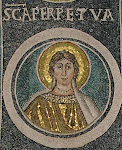As well as her emphasis on the Word of God in Holy Scripture, she differs from the liberal/ mainline in cautioning people about sharing their dreams. I think there is wisdom in this. I do lead dream groups and we do benefit from sharing the dreams in the group. However, this requires experienced leadership and I like to have co-leaders, so that two people are responsible for maintaining the safety of the group.
The benefits I see in group dream work are the building of community, the learning by experience about "projection", and the decoding of the symbolism. As Jeremy Taylor (a D. Min in the Unitarian Universalist Church) says, "The dreamer is uniquely blind to the meaning of his or her own dream." However, when the dream's meaning is suggested by others, the dreamer will have what Jeremy calls the "aha!" moment. As he puts it in his Basic Dream Work Tool Kit:
Only the dreamer can say with any certainty what meanings his or her dream may have. This certainty usually comes in the form of a wordless "aha!" of recognition, and is the only reliable touchstone of dream work.
Hamon makes what I perceive as the similar point, but ascribes the "aha!" to the work of God and the Holy Spirit:
Whatever symbols appear in a dream, they must be either interpreted by the Holy Spirit or analyzed in light of the dreamer's experience and not solely by an interpretation imposed by another individual. Never impose your interpretation of a symbol on another if the dreamer does not bear witness to it. God will give the dreamer assurance and peace when the proper representation if the symbol is found.(pg 150)
Hamon's emphasis on caution regarding sharing dreams with others may be based on the dynamics of prophetic, charismatic churches. Her words suggest that people in these charismatic churches may use their dreams to accuse others (and even challenge the leadership of the churches -- see pg. 170).
This is the area where people tend to make the most mistakes in responding to their dreams. While God does in fact sometimes give us dreams regarding others, it is imperative that we use extra caution in responding to such dreams. As we have seen, many times when you dream of of other people, you may not be receiving a revelation or message for them; instead you may be actually dreaming about a part of your self.(pg. 166)
As implied here, Hamon has developed in the book a Christian charismatic presentation of the idea that the characters in a dream represent the parts of ourselves. At the beginning of the book, she presented a dream about her concerns for her out of control child, that she explains was actually about a part of herself that was immature. She notes how a wrong interpretation would have been to fear for her child, believing the dream was a prophecy about him. Rather, God showed her the area of herself that needed development.
I liked Hamon's book very much because of her emphasis on the Bible and symbolism and especially because of her understanding of the potential for other people in one's dream to be aspects of oneself.
*
*
*





No comments:
Post a Comment